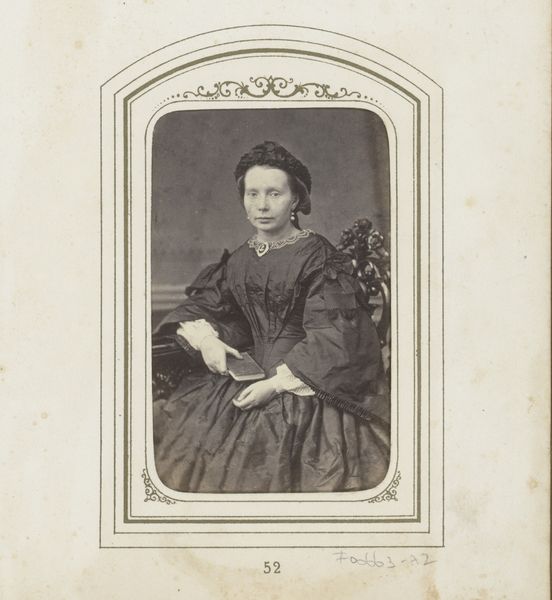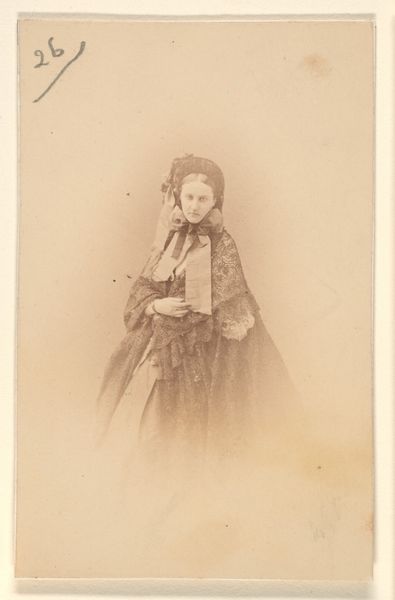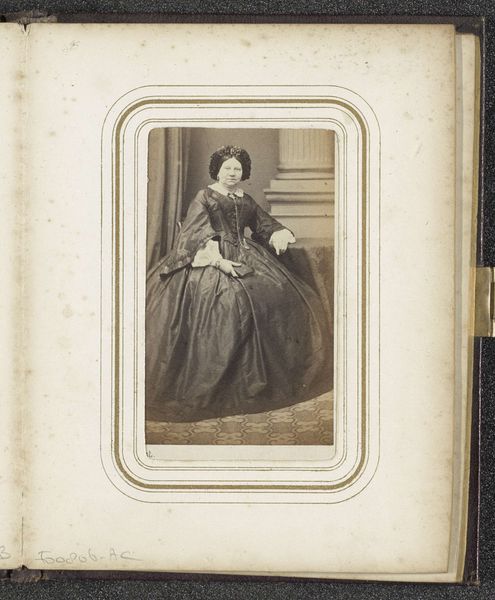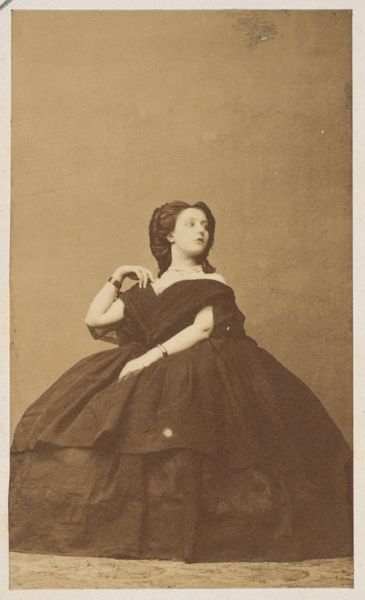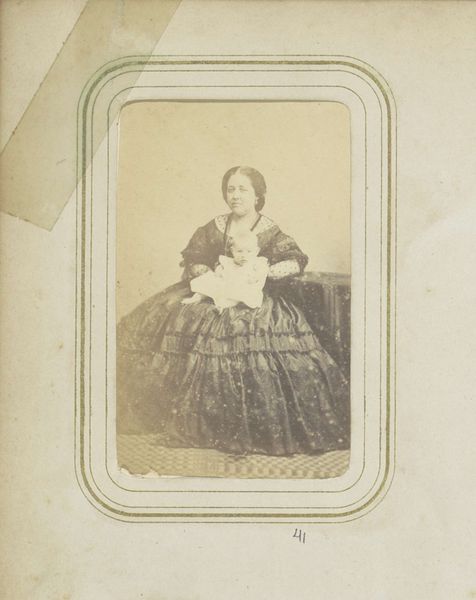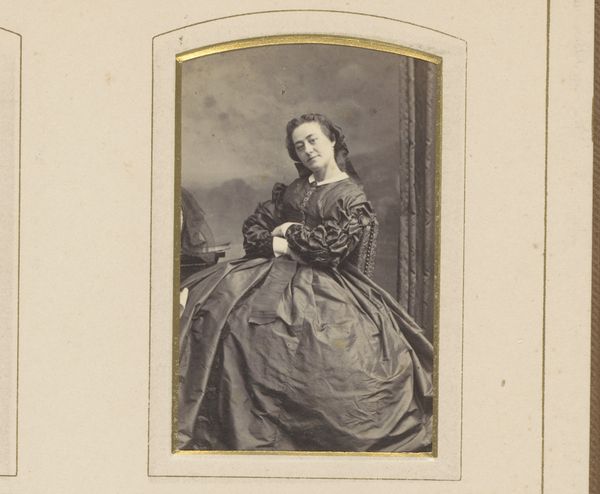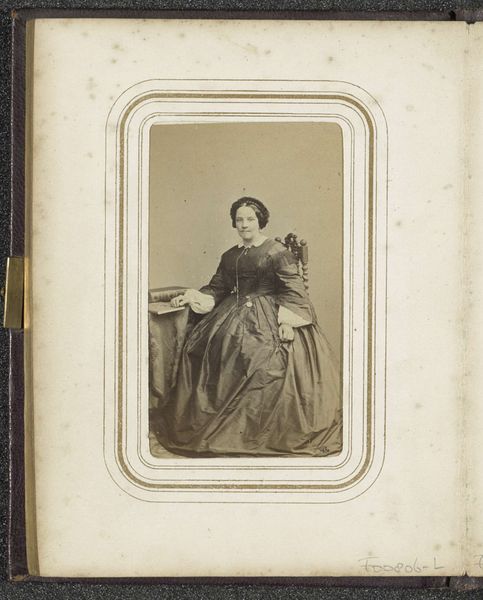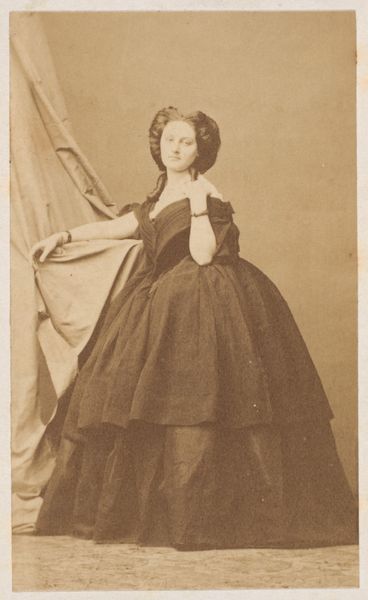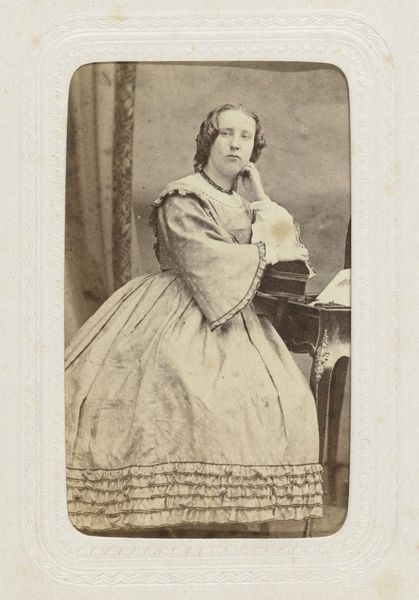
photography, gelatin-silver-print
#
portrait
#
photography
#
pencil drawing
#
gelatin-silver-print
Dimensions: height 85 mm, width 51 mm
Copyright: Rijks Museum: Open Domain
Editor: This is a gelatin-silver print from sometime between 1862 and 1885, titled "Portret van een vrouw met een kap" – "Portrait of a Woman with a Bonnet." It's by Albert Greiner and housed here at the Rijksmuseum. I’m immediately struck by how much the subject's dark clothing contrasts with her serene expression. What stands out to you about this piece? Curator: The enduring quality of portraits such as this one lies in their symbolic density. Think of the bonnet itself. What might a bonnet signify beyond mere head covering? Editor: Perhaps modesty? An adherence to societal norms? Curator: Precisely. It speaks of a particular cultural moment. And observe the woman’s hands. Positioned demurely, they suggest control, but also perhaps… resignation? Notice how they’re holding each other; hands often speak of inner lives. What about the composition—how does the framing impact the symbolic meaning, in your opinion? Editor: The frame within the photograph, around the image itself, feels like another layer of constraint, almost like the portrait is further distancing us. But it also elevates it, makes it feel precious. Curator: Good point. Does the subdued colour palette amplify or diminish the sense of cultural memory here? What are your thoughts? Editor: Amplify, I think. It pushes it back in time, feels inherently historical in a way a colour photograph wouldn’t. Curator: Agreed. Each element—the clothing, the posture, even the photographic process itself—contributes to a complex tapestry of meaning. It really offers a profound window into understanding the values and visual language of the era. Editor: Looking closely at this image has definitely deepened my appreciation for how even seemingly simple portraits can hold so much cultural weight and historical context. It's about learning the visual vocabulary of another time.
Comments
No comments
Be the first to comment and join the conversation on the ultimate creative platform.


